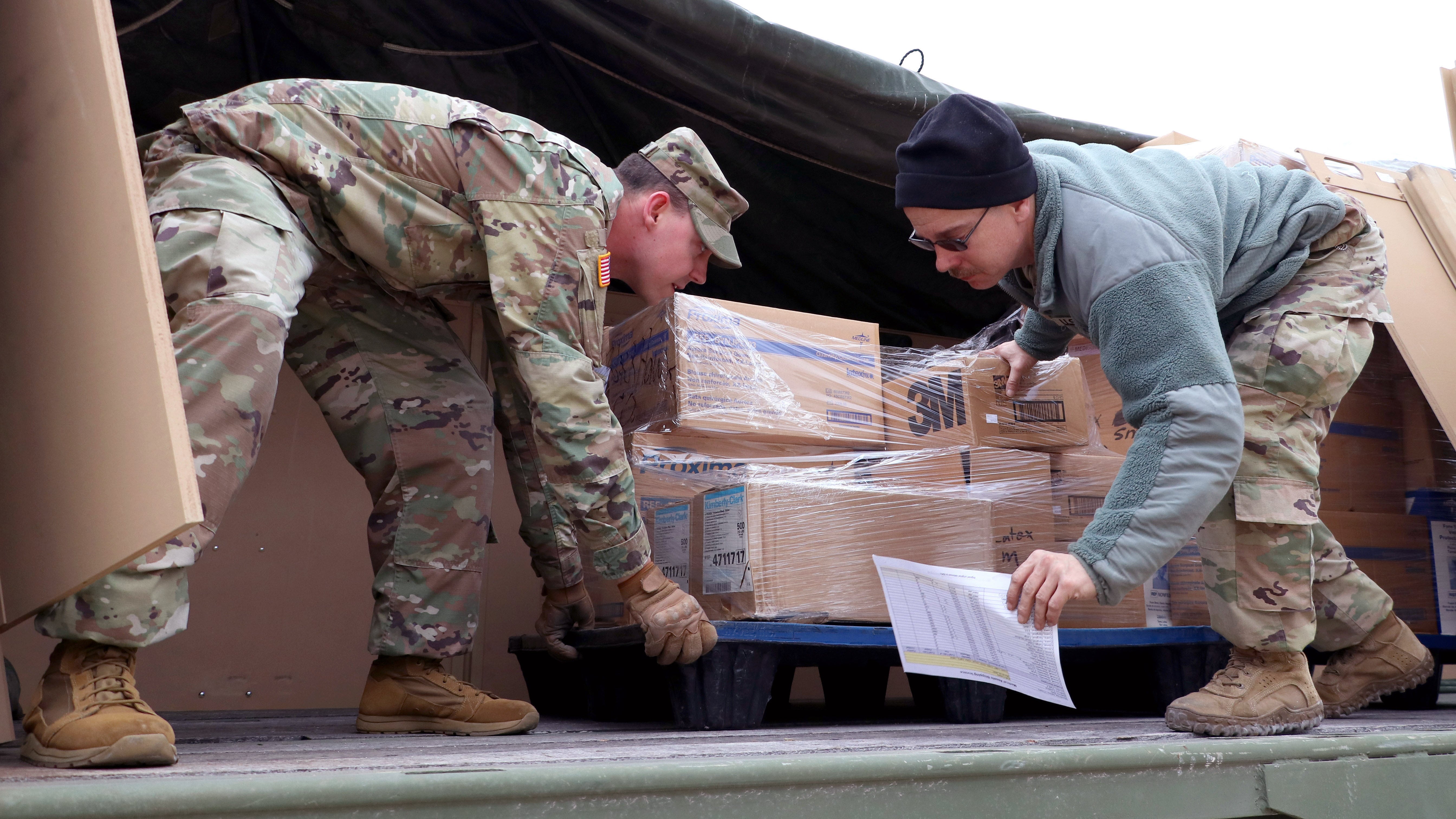Guard COVID-19 Support Continues to Grow
Guard COVID-19 Support Continues to Grow

The ever-evolving nature of the COVID-19 outbreak makes it hard to predict where members of the National Guard will be needed next, said the chief of the National Guard Bureau, who predicted that the number of troops called up would surge by more than 10,000 in the next two weeks.
Planners at the National Guard Bureau have been working with models that project where the new infection hot spots will be, “but they’re all wrong. Nobody knows what the right model is,” said Air Force Gen. Joseph Lengyel, explaining that the projections serve to at least give the Guard a place to start.
“We’ve been following [the models], and we’re planning to bring people on duty in concert with where we see what the predictions are for the peak, the surge points for cases and need for the National Guard, and we’ll keep doing that,” Lengyel said in a press briefing April 8.
More than 28,400 National Guard troops were already deployed as of April 8 in every U.S. state and territory, a number that was expected to surge again before the weekend.
“We’ve been accelerating at more than 1,000 a day, [and] it’s been a little over that lately. It will be over 30,000 in the next couple of days, and we could easily get to 10,000 [more] over the next week or two,” Lengyel said. “We are authorized now to bring on up to 44,000 total members of the National Guard on Title 32 pay status, which gives them federal pay but state control.”
National Guard troops are being brought on duty by the states only as needed, when there are specific tasks and missions.
Troops have been supporting COVID-19 response efforts by providing transportation, communications, logistics, medical support and mortuary affairs. In New York City, Lengyel said, members of the New York National Guard have been helping emergency responders with the removal of deceased residents from homes, deaths not necessarily related to the virus pandemic.
Lengyel noted that while the response to the COVID-19 outbreak is not the largest, it is unprecedented in its complexity. He pointed out that during the response to Hurricane Katrina in 2005, there were 50,000 National Guard troops called up, but it was localized in Louisiana and Mississippi where people and equipment could come and go as needed.
“This is a completely different scenario,” Lengyel said. “It’s a nationwide, simultaneous, dynamic situation that requires the deliberate manipulation of the force. You don’t want to bring people in if you don’t need them. As conditions on the ground change, the mission changes.”

